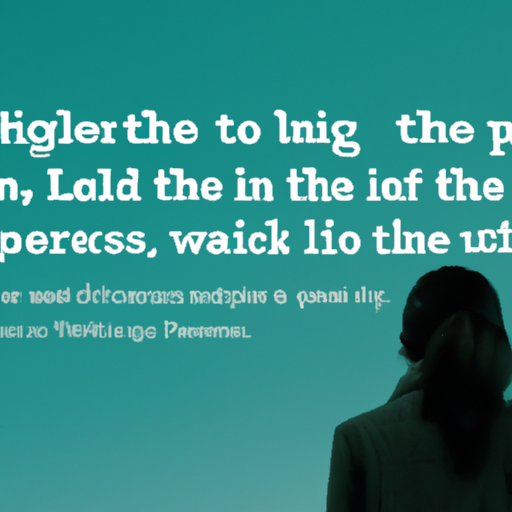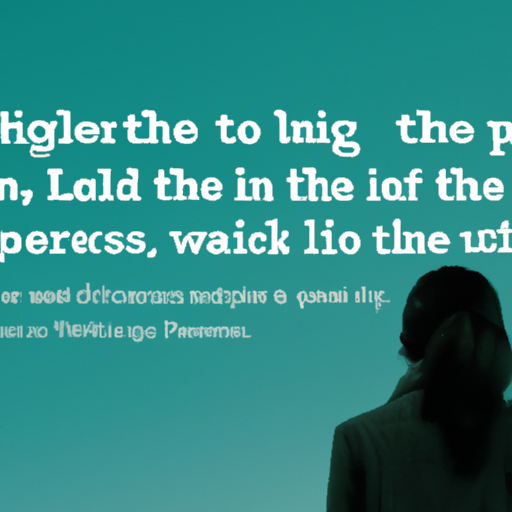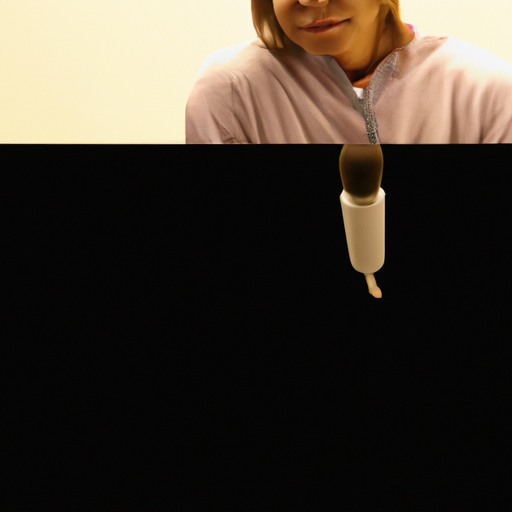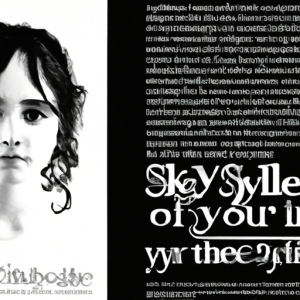In the fast-paced world of today, where life often feels like a never-ending race, there is something magical about finding inspiration in the simplicity of a movie quote that resonates deeply within. “Up In The Air Movie Quotes” is a product that offers a curated collection of the most memorable lines from the beloved film, “Up in the Air.” With its heartfelt storytelling and thought-provoking characters, this collection of quotes serves as a reminder to embrace life’s uncertainties, find the beauty in unexpected moments, and ultimately, soar above the challenges that weigh us down. Whether you’re seeking a daily dose of inspiration or a nostalgic connection to a cherished film, “Up In The Air Movie Quotes” encapsulates the essence of human emotions and experiences, leaving an indelible mark on the hearts and minds of those who encounter it.
1. Ryan Bingham’s Philosophy on Life and Relationships

1.1. Ryan on the Loneliness of Frequent Travel
Ryan Bingham, the protagonist of “Up in the Air,” shares a unique perspective on life and relationships that is influenced by his solitary lifestyle as a frequent traveler. Constantly on the move, Ryan finds himself immersed in a world of transitory connections and transient encounters. While this lifestyle may seem exciting to some, Ryan recognizes the profound loneliness that comes with it. He compares himself to a “bona fide jetsetter,” always flying high, but ultimately feeling disconnected from the people and places he encounters.
1.2. Ryan on Minimalism and Letting Go
Ryan’s philosophy on life aligns with the principles of minimalism, emphasizing the importance of simplicity and letting go of unnecessary attachments. As a termination facilitator, his job revolves around helping others sever ties and move on from their professional lives. This experience has taught Ryan that shedding material possessions and emotional baggage can lead to a sense of liberation. By living with fewer possessions, he believes one can achieve a sense of freedom and focus on what truly matters in life.
1.3. Ryan on the Irrelevance of Personal Connections
Ryan has developed a cynical view of personal connections, seeing them as largely irrelevant and transitory. His constant travel has made him adept at avoiding emotional entanglements, preferring the ease and freedom of casual encounters. He believes that investing in relationships only leads to potential disappointment and pain. However, as the movie progresses, Ryan’s perspective is challenged, forcing him to confront the idea that personal connections may hold more significance and meaning than he initially believed.
2. Natalie Keener’s Character Development
2.1. Natalie’s Initial Idealism and Ambition
Natalie Keener, a young and ambitious Cornell graduate, is introduced as a character driven by idealism and a desire to revolutionize the termination process through technology. She believes that by implementing a remote termination system, she can reduce costs and increase efficiency. Armed with optimism and a determination to prove herself in the corporate world, Natalie sees her job as an opportunity for professional growth and the chance to make a tangible impact.
2.2. Natalie’s Shift in Perspective and Understanding of Human Connections
Throughout the course of the film, Natalie’s initial idealism begins to waver as she witnesses the impact of her decisions on real people. As she travels with Ryan and assists in the termination process, she starts to see the human side of the equation. Natalie begins to understand that behind the statistics and spreadsheets lie individuals with emotions, fears, and dreams. This realization prompts her to question her previous certainty and reevaluate her perception of personal connections.
2.3. Natalie’s Realization of the Importance of Emotional Engagement
Through her experiences with Ryan and the people they encounter along their journey, Natalie learns the significance of emotional engagement and compassion. She discovers that establishing genuine connections is not only crucial for professional success but also essential for personal growth and fulfillment. Natalie’s transformation illustrates the profound impact that human connections can have on one’s perspective and underscores the importance of empathy and understanding in both personal and professional relationships.
3. The Significance of Airports as Symbolic Spaces
3.1. Airports as Transitory Places
In “Up in the Air,” airports serve as symbolic spaces that reflect the transient nature of Ryan’s lifestyle and the constant movement that characterizes modern society. Airports are depicted as bustling hubs of activity where individuals from various backgrounds converge, each on their own journey. Just as Ryan passes through airports, connecting flights, and hotel rooms, people navigate their lives in a perpetual state of transition, always moving from one place to another.
3.2. Airports as Representations of Modern Life’s Disconnect
The film also portrays airports as emblematic of the disconnect that pervades modern life. Amidst the flurry of travelers, each consumed by their own concerns and preoccupations, a sense of isolation and anonymity prevails. The bustling crowds and impersonal interactions in airports mirror the larger societal shift towards prioritizing individualism and self-interest. Ryan’s frequent encounters with strangers in transit highlight the superficiality of many interactions in this fast-paced, disconnected world.
3.3. Airports as Metaphors for Emotional Departure and Arrival
Additionally, airports serve as metaphorical spaces representing the emotional departures and arrivals that occur throughout the film. They become the backdrop for defining moments in the characters’ lives, symbolizing the ever-present fragility and uncertainty of human connections. Just as planes take off and land, relationships are established, tested, and sometimes abandoned within these transitory spaces. The emotional weight of these departures and arrivals reinforces the idea that airports are not merely physical locations but emotional landscapes as well.
4. The Duality Between Maintaining Stability and Embracing Change
4.1. Ryan’s Commitment to a Nomadic Lifestyle
Ryan’s commitment to a nomadic lifestyle is a manifestation of his belief that maintaining stability is incompatible with the human desire for growth and change. By embracing the transitory nature of his existence, Ryan avoids the potential pitfalls of emotional attachments and the unpredictability of staying in one place. He treasures the freedom and control that come with being unencumbered by possessions and intimate relationships.
4.2. Alex Goran’s Perspective on the Inevitability of Change
Alex Goran, a fellow traveler and love interest, offers a contrasting perspective to Ryan’s commitment to a nomadic lifestyle. Alex recognizes that change is an inevitable part of life and believes in embracing it rather than avoiding it. Instead of fearing the uncertainty that comes with change, she views it as an opportunity for personal growth and transformation. Alex challenges Ryan’s notion of stability, arguing that it is possible to find stability within oneself while still embracing life’s changes.
4.3. The Tension Between Ryan’s Desire for Stability and Alex’s Embrace of Change
The tension between Ryan’s desire for stability and Alex’s embrace of change serves as a central conflict in the film. Ryan’s fear of emotional vulnerability and loss feeds his resistance to change and reinforces his belief that stability lies in maintaining the status quo. Meanwhile, Alex encourages Ryan to confront his fears and recognize that true stability can be achieved by embracing change rather than running from it. This tension fuels the development of their relationship and challenges Ryan’s deeply ingrained philosophy.
5. Peter Sullivan’s Subplot: The Impact of Economic Crisis
5.1. Peter’s Identity Crisis Amidst Layoffs and Downsizing
Peter Sullivan, a young employee at a company undergoing layoffs, represents the broader impact of the economic crisis on individuals’ sense of identity and purpose. As his future hangs in the balance, Peter grapples with feelings of uncertainty and anxiety. The threat of losing his job forces him to reevaluate his priorities and question who he is beyond his professional identity.
5.2. Peter’s Representation of the Vulnerability of the American Worker
Peter embodies the vulnerability of the American worker in an era of economic uncertainty. His struggle resonates with audiences who have experienced or witnessed the consequences of downsizing, layoffs, and the erosion of job security. By portraying Peter’s storyline, “Up in the Air” sheds light on the emotional and psychological toll that the economic crisis can have on individuals and highlights the significance of finding resilience and strength in the face of adversity.
5.3. Peter’s Pursuit of Personal Growth and Resilience
As Peter faces the profound challenges brought on by the economic crisis, he undergoes a transformative journey that exemplifies personal growth and resilience. He learns to embrace uncertainty and finds solace in the realization that his self-worth is not solely tied to his job title or financial stability. Peter’s resilience serves as an inspiration, demonstrating the capacity of individuals to adapt, grow, and find new paths to fulfillment in times of hardship.
6. The Irony of Ryan’s Job as a Termination Facilitator
6.1. Ryan’s Role in Delivering Difficult News
Ryan’s role as a termination facilitator for a corporate downsizing firm introduces a powerful irony in the film. Despite his philosophy of detachment and avoidance of personal connections, Ryan’s job requires him to deliver devastating news to individuals whose lives are upended by job loss. He becomes the embodiment of the dichotomy between professional obligations and the human emotions inevitably involved in delivering such news.

6.2. Ryan’s Expertise in Managing Emotions during Termination
Ironically, Ryan excels at his job precisely because of his ability to manage emotions during terminations. His detached nature and practiced delivery style enable him to navigate through these difficult conversations with a calm and composed demeanor. Ryan knows how to communicate with empathy while simultaneously maintaining emotional distance, allowing him to fulfill his professional role while avoiding becoming personally affected.
6.3. The Contrast Between Ryan’s Professional Life and Personal Disconnect
There exists a stark contrast between Ryan’s professional life as a termination facilitator and his personal disconnect from emotional connections. While Ryan demonstrates proficiency in managing the emotions of others during terminations, he struggles to confront his own emotional vulnerability. This juxtaposition highlights the inherent contradictions within Ryan’s character, as he grapples with the complexities of his own emotional landscape while successfully navigating the emotional landscapes of others.
7. The Fragility of Human Connections and the Fear of Intimacy
7.1. Ryan’s Fear of Emotional Vulnerability
Ryan’s fear of emotional vulnerability is a central theme in “Up in the Air.” His frequent travel and transient lifestyle serve as shields against the potential pain and disappointment that can accompany emotionally intimate connections. Ryan’s experiences have taught him that investing in relationships inevitably leads to vulnerability and the risk of rejection, which he finds unbearable. As a result, he maintains a carefully constructed emotional barrier to protect himself from the devastation of loss.
7.2. The Difficulty of Balancing Independence with Emotional Intimacy
The film explores the delicate balance between independence and emotional intimacy, revealing the challenges inherent in both. Ryan’s commitment to personal freedom and independence clashes with the human need for emotional connections and companionship. While he cherishes his freedom, he also grapples with the loneliness and emptiness that can come from avoiding emotional intimacy. The film underscores the difficulty of reconciling these conflicting desires and the potential consequences of maintaining emotional distance.
7.3. The Devastation of Rejection and Loss
“Up in the Air” delves into the devastating impact of rejection and loss on individuals, particularly in the realm of personal relationships. Ryan’s fear of intimacy stems from his avoidance of potential rejection and the inevitable loss that follows. However, as the film depicts, the avoidance of emotional connections does not shield one from pain but rather denies the potential for deep and meaningful connections. The exploration of this theme serves as a poignant reminder of the fragility of human connections and the profound impact they can have on our lives.
8. The Role of Relationships in Finding Purpose and Meaning
8.1. Alex’s Influence on Ryan’s Perception of Relationships
Alex’s character and her growing bond with Ryan challenge his perception of relationships as inconsequential and devoid of meaning. Through their shared experiences, Alex teaches Ryan the value of emotional engagement and the potential for personal growth that comes from intimate connections. Their relationship serves as a catalyst for Ryan’s introspection, causing him to reevaluate his philosophy and consider the transformative power of emotional connections.
8.2. Natalie’s Impact on Ryan’s Understanding of Personal Growth
Natalie’s character also plays a significant role in shaping Ryan’s understanding of personal growth and the importance of relationships. As Natalie shifts her perspective and recognizes the emotional impact of her decisions, Ryan becomes a mentor figure, guiding her through her own journey of self-discovery. In teaching Natalie about the complexities of human connections, Ryan develops a deeper understanding of the value they hold in his own life.
8.3. The Importance of Emotional Connections in Shaping One’s Life
Ultimately, “Up in the Air” emphasizes the transformative power of emotional connections and their role in shaping one’s life. Through various encounters and relationships, the film illustrates the potential for personal growth, self-reflection, and ultimately finding purpose and meaning through intimate connections. Ryan’s journey serves as a testament to the importance of letting go of emotional barriers and embracing the complexities and vulnerabilities inherent in building genuine relationships.
9. The Bittersweet Nature of Hope and Uncertainty
9.1. Ryan’s Perpetual State of Optimistic Uncertainty
Ryan’s character embodies a perpetual state of optimistic uncertainty, mirroring the broader human experience of hope and the fear of disappointment. Despite his aversion to emotional connections, Ryan remains hopeful, searching for moments of joy and fulfillment amidst the transitory nature of his existence. His optimism, however, is tinged with a sense of uncertainty, as he grapples with the fear of disappointment and the potential pain that accompanies his pursuit of emotional engagement.
9.2. The Dilemma Between Hope for the Future and Fear of Disappointment
The film captures the dilemma between embracing hope for the future and the paralyzing fear of disappointment that accompanies it. Ryan’s experiences have molded him into a cautious optimist, acutely aware of the fragility of human connections. As he teeters between embracing hope and fearing disappointment, he represents the apprehensions and reservations that many individuals face when navigating the uncertainty of life and relationships.
9.3. Finding Contentment in Embracing Life’s Unknowns
Despite the bittersweet nature of hope and uncertainty, “Up in the Air” suggests that finding contentment requires embracing life’s unknowns. Ryan’s journey, marked by moments of growth and self-discovery, highlights the importance of embracing uncertainty and being open to the possibilities that lie ahead. Rather than shying away from the unpredictability of life and relationships, the film encourages viewers to find joy and purpose in navigating the uncharted territories of human connection.
10. The Reflection of Societal Changes and Values
10.1. Up in the Air’s Critique of a Disconnected Society
“Up in the Air” offers a critique of modern society, highlighting the ways in which disconnection and individualism have become entrenched values. Through its portrayal of airports as symbols of the transitory and impersonal nature of contemporary life, the film suggests that societal values have shifted towards prioritizing personal success and independence, often at the expense of meaningful human connections. This critique provides a thought-provoking commentary on the impact of societal changes on interpersonal relationships.
10.2. The Shift in Priorities from Materialism to Experiences
The film also shines a light on the shift in societal priorities from materialism to experiences. Ryan’s philosophy of minimalism and detachment aligns with this broader societal trend. As individuals increasingly prioritize experiences over material possessions, the film challenges viewers to reflect on the true sources of fulfillment and meaning in their lives. By depicting the transitory nature of material wealth, “Up in the Air” suggests that genuine connections and personal growth hold greater value than the accumulation of material goods.
10.3. The Relevance of the Film’s Themes in Contemporary Society
The themes explored in “Up in the Air” remain highly relevant in contemporary society. The increasing prevalence of remote work, globalization, and transitory lifestyles have heightened the disconnection and loneliness that characterize modern life. The film’s exploration of the fragility of human connections, the significance of emotional engagement, and the pursuit of personal growth resonates with audiences facing similar challenges in their own lives. “Up in the Air” serves as a poignant reminder of the importance of fostering genuine human connections and finding richness in the midst of life’s uncertainties.



















+ There are no comments
Add yours